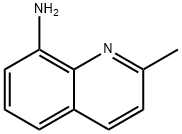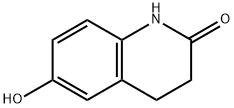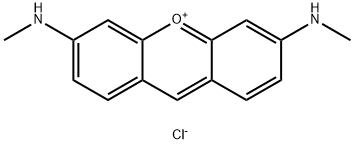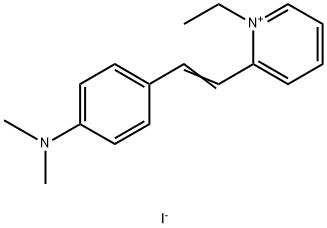Quinaldine Red
Synonym(s):2-(4-Dimethylaminostyryl)-1-ethylquinolinium iodide;Quinaldine red
- CAS NO.:117-92-0
- Empirical Formula: C21H23IN2
- Molecular Weight: 430.33
- MDL number: MFCD00011968
- EINECS: 204-221-5
- SAFETY DATA SHEET (SDS)
- Update Date: 2024-12-18 14:07:02

What is Quinaldine Red?
Chemical properties
greenish-black or dark blue to grey powder
The Uses of Quinaldine Red
Quinaldine Red is a cationic fluorescent probe. Dyes and metabolites.
The Uses of Quinaldine Red
As an indicator.
What are the applications of Application
Quinaldine Red is a cationic fluorescent probe
Biochem/physiol Actions
Quinaldine Red (2-(p-Dimethylaminostyryl) quinoline ethiodide) is a very dark red or reddish-black colored powder. It has been used mainly for regulation of cell proliferation, in diagnostic agents of disease related with amyloid accumulation, detecting enzyme activity and dental bleaching materials. In addition, quinaldine red also been implicated in treatment of allodynia and virus infectious diseases. It is colorless at pH 1.4 and red at pH 3.2.
Properties of Quinaldine Red
| Melting point: | 240 °C |
| Density | 1.3772 (estimate) |
| Flash point: | 93.3°C |
| storage temp. | room temp |
| solubility | Solubility Sparingly soluble in water; freely soluble in ethanol |
| form | Powder |
| pka | 2.63(at 25℃) |
| color | Greenish-black or dark blue to gray |
| PH Range | 1.4(colourless)-3.2(pink) |
| Water Solubility | almost insoluble |
| Sensitive | Light Sensitive |
| λmax | 528nm |
| Merck | 14,8049 |
| BRN | 3798055 |
| Stability: | Light Sensitive |
| Major Application | Display device, photoresists, lithographic plates, toner, paints, coating materials, hair dye, treatment of mechanical allodynia, regulation of cell proliferation, diagnostic agents for diseases related with amyloid accumulation, treatment of virus infectiousdiseases, detecting enzyme activity, dental bleaching materials |
| CAS DataBase Reference | 117-92-0(CAS DataBase Reference) |
| EPA Substance Registry System | Quinaldine Red (117-92-0) |
Safety information for Quinaldine Red
| Signal word | Warning |
| Pictogram(s) |
 Exclamation Mark Irritant GHS07 |
| GHS Hazard Statements |
H315:Skin corrosion/irritation H319:Serious eye damage/eye irritation H335:Specific target organ toxicity, single exposure;Respiratory tract irritation |
| Precautionary Statement Codes |
P233:Keep container tightly closed. P260:Do not breathe dust/fume/gas/mist/vapours/spray. P261:Avoid breathing dust/fume/gas/mist/vapours/spray. P264:Wash hands thoroughly after handling. P264:Wash skin thouroughly after handling. P271:Use only outdoors or in a well-ventilated area. P280:Wear protective gloves/protective clothing/eye protection/face protection. P304:IF INHALED: P312:Call a POISON CENTER or doctor/physician if you feel unwell. P321:Specific treatment (see … on this label). P340:Remove victim to fresh air and keep at rest in a position comfortable for breathing. P362:Take off contaminated clothing and wash before reuse. P302+P352:IF ON SKIN: wash with plenty of soap and water. P304+P340:IF INHALED: Remove victim to fresh air and Keep at rest in a position comfortable for breathing. P305+P351+P338:IF IN EYES: Rinse cautiously with water for several minutes. Remove contact lenses, if present and easy to do. Continuerinsing. P332+P313:IF SKIN irritation occurs: Get medical advice/attention. P337+P313:IF eye irritation persists: Get medical advice/attention. P403:Store in a well-ventilated place. P405:Store locked up. P403+P233:Store in a well-ventilated place. Keep container tightly closed. P501:Dispose of contents/container to..… |
Computed Descriptors for Quinaldine Red
Quinaldine Red manufacturer
New Products
Tert-butyl bis(2-chloroethyl)carbamate 4-Methylphenylacetic acid N-Boc-D-alaninol N-BOC-D/L-ALANINOL N-octanoyl benzotriazole 3-Morpholino-1-(4-nitrophenyl)-5,6-dihydropyridin- 2(1H)-one Furan-2,5-Dicarboxylic Acid DIETHYL AMINOMALONATE HYDROCHLORIDE 1,1’-CARBONYLDIIMIDAZOLE R-2-BENZYLOXY PROPIONIC ACID 1,1’-CARBONYLDI (1,2-4 TRIAZOLE) N-METHYL INDAZOLE-3-CARBOXYLIC ACID (2-Hydroxyphenyl)acetonitrile 4-Bromopyrazole 5-BROMO-2CYANO PYRIDINE 5,6-Dimethoxyindanone 5-broMo-2-chloro-N-cyclopentylpyriMidin-4-aMine 2-(Cyanocyclohexyl)acetic acid 4-methoxy-3,5-dinitropyridine 1-(4-(aminomethyl)benzyl)urea hydrochloride 2-aminopropyl benzoate hydrochloride diethyl 2-(2-((tertbutoxycarbonyl)amino) ethyl)malonate tert-butyl 4- (ureidomethyl)benzylcarbamate Ethyl-2-chloro((4-methoxyphenyl)hydrazono)acetateRelated products of tetrahydrofuran








You may like
-
 Quinaldine red, GR CAS 117-92-0View Details
Quinaldine red, GR CAS 117-92-0View Details
117-92-0 -
 Quinaldine Red CAS 117-92-0View Details
Quinaldine Red CAS 117-92-0View Details
117-92-0 -
 Quinaldine Red CAS 117-92-0View Details
Quinaldine Red CAS 117-92-0View Details
117-92-0 -
 Quinaldine red CAS 117-92-0View Details
Quinaldine red CAS 117-92-0View Details
117-92-0 -
 QUINALDINE RED INDICATOR Indicator grade CAS 117-92-0View Details
QUINALDINE RED INDICATOR Indicator grade CAS 117-92-0View Details
117-92-0 -
 117-92-0 Quinaldine Red 99%View Details
117-92-0 Quinaldine Red 99%View Details
117-92-0 -
 118753-70-1 98+View Details
118753-70-1 98+View Details
118753-70-1 -
 733039-20-8 5-broMo-2-chloro-N-cyclopentylpyriMidin-4-aMine 98+View Details
733039-20-8 5-broMo-2-chloro-N-cyclopentylpyriMidin-4-aMine 98+View Details
733039-20-8
Statement: All products displayed on this website are only used for non medical purposes such as industrial applications or scientific research, and cannot be used for clinical diagnosis or treatment of humans or animals. They are not medicinal or edible.